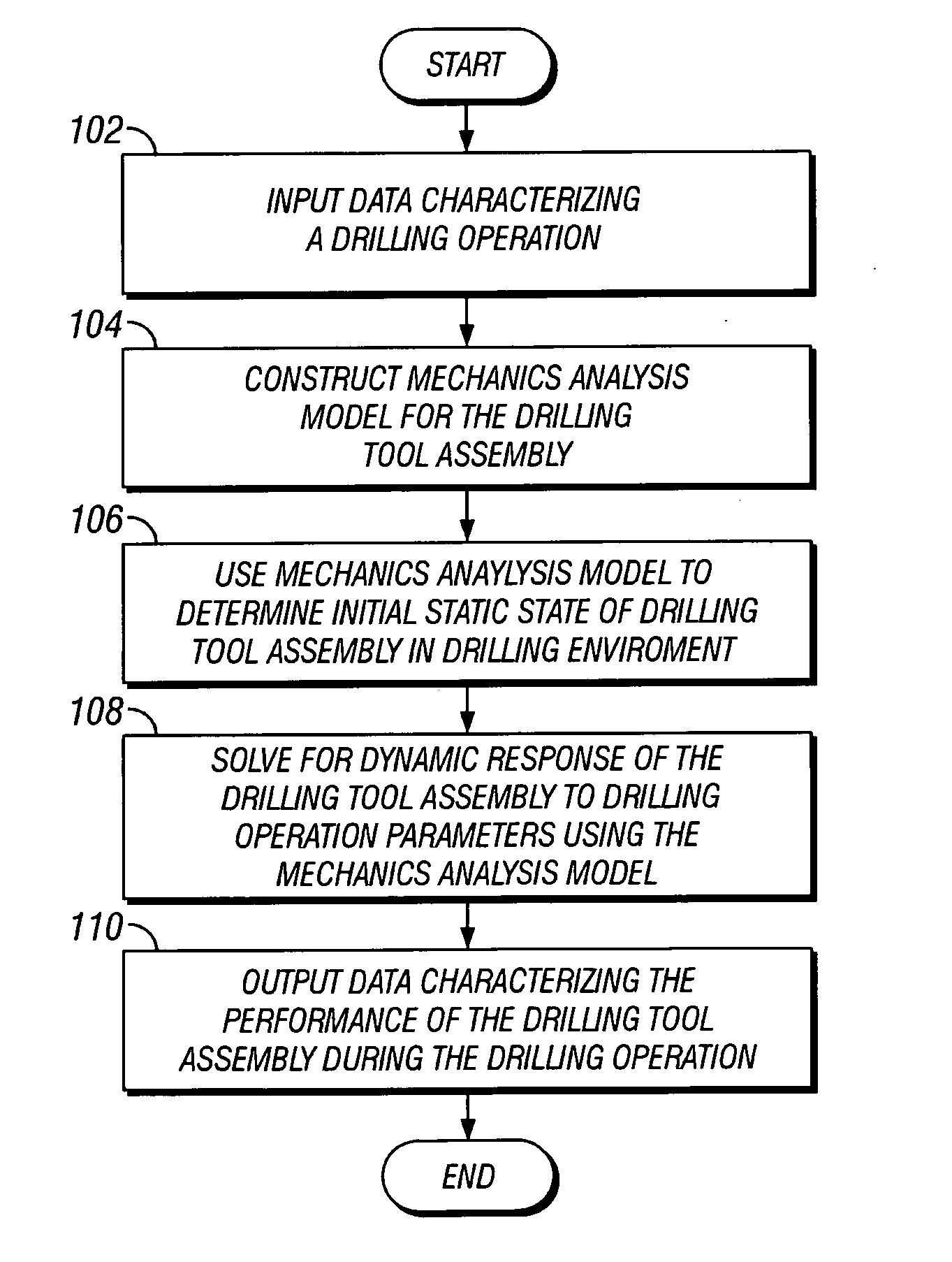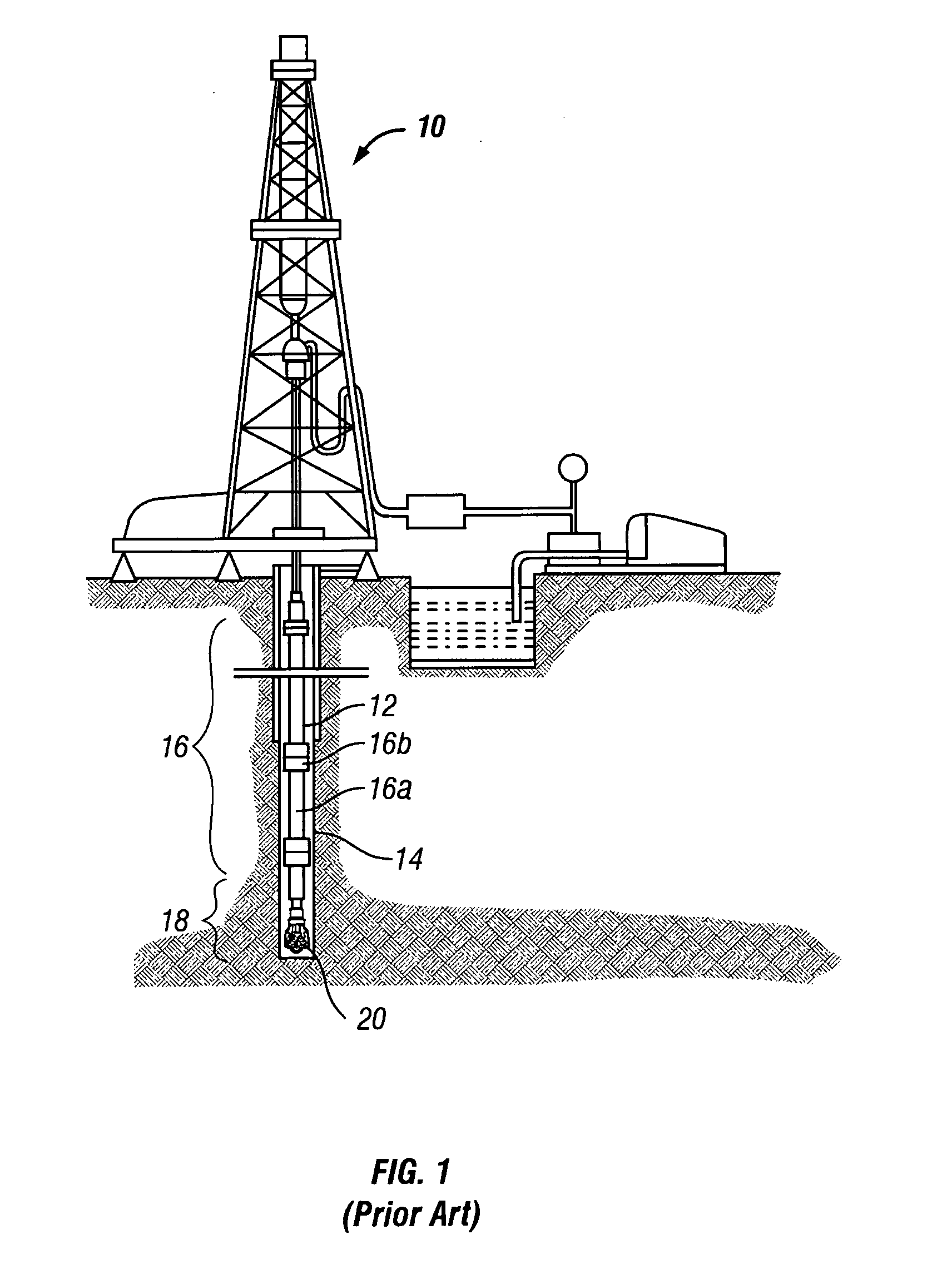Methods for modeling, designing, and optimizing the performance of drilling tool assemblies
a technology for drilling tool assemblies and performance optimization, applied in the direction of waterlogging instruments, borehole/well accessories, etc., can solve the problems of large fluctuation in the wob, torsional, axial and lateral vibration of drilling tool assemblies, and the damping is typically not enough to suppress vibration completely, so as to achieve the effect of optimizing the performance parameter of drilling tool assemblies
- Summary
- Abstract
- Description
- Claims
- Application Information
AI Technical Summary
Benefits of technology
Problems solved by technology
Method used
Image
Examples
Embodiment Construction
[0051] The present invention provides methods for predicting the dynamic response of a drilling tool assembly drilling an earth formation, methods for optimizing a drilling tool assembly design, methods for optimizing drilling operation parameters, and methods for optimizing drilling tool assembly performance.
[0052] Methods for determining the dynamic response of a drilling tool assembly to drilling interaction with an earth formation were initially disclosed in U.S. patent application Ser. No. 09 / 689,299 by Huang, which is assigned to the assignee of the present invention and incorporated herein by reference. New methods developed for modeling fixed cutter drill bits are disclosed in U.S. Patent Application No. 60 / 485,642 by Huang, filed on Jul. 9, 2003, titled “Method for Modeling, Designing, and Optimizing Fixed Cutter Bits,” assigned to the assignee of the present application and incorporated herein by reference in its entirety. Methods disclosed in the '642 application may adv...
PUM
 Login to View More
Login to View More Abstract
Description
Claims
Application Information
 Login to View More
Login to View More - R&D
- Intellectual Property
- Life Sciences
- Materials
- Tech Scout
- Unparalleled Data Quality
- Higher Quality Content
- 60% Fewer Hallucinations
Browse by: Latest US Patents, China's latest patents, Technical Efficacy Thesaurus, Application Domain, Technology Topic, Popular Technical Reports.
© 2025 PatSnap. All rights reserved.Legal|Privacy policy|Modern Slavery Act Transparency Statement|Sitemap|About US| Contact US: help@patsnap.com



